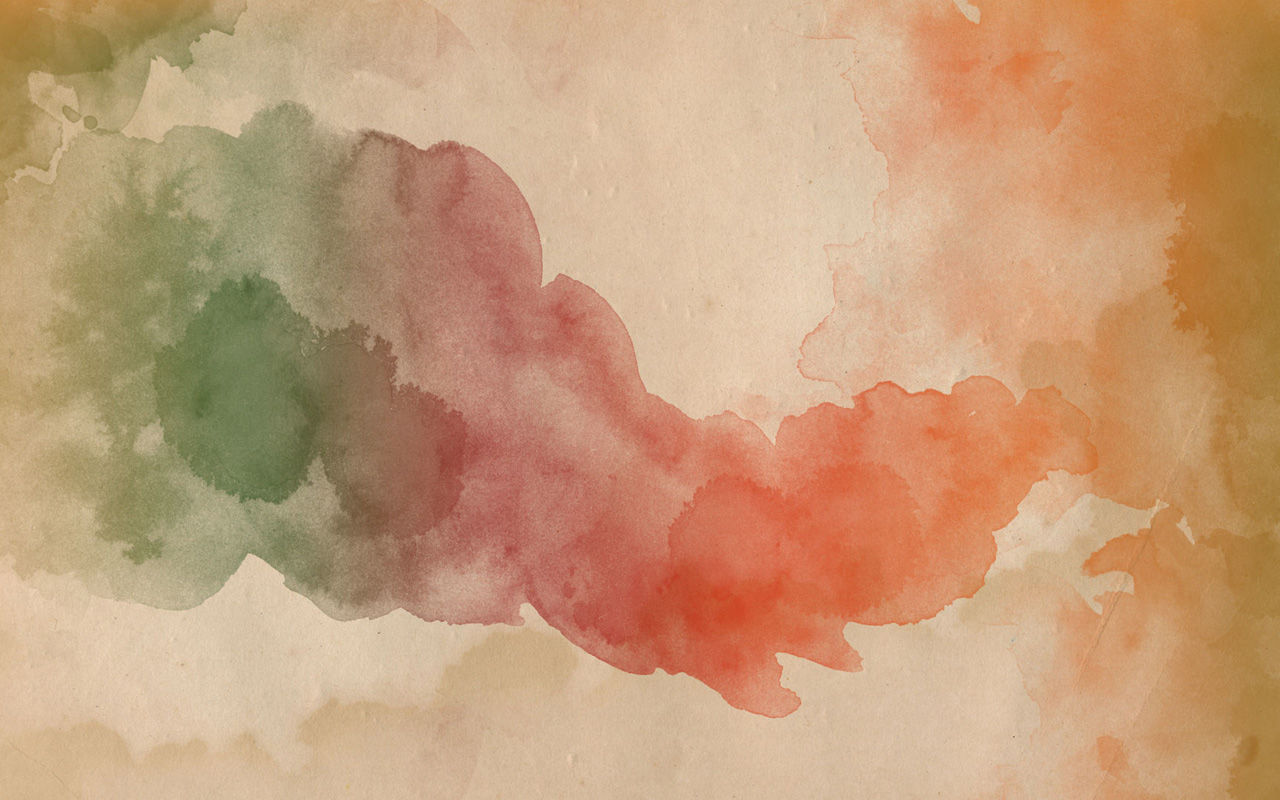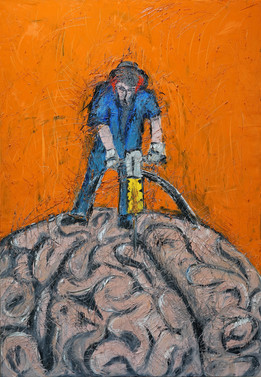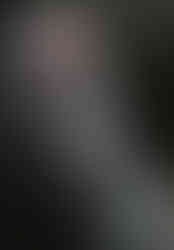The transition from studying law to art is not an uncommon path in art history. Many famous artists, such as Henri Matisse and Wassily Kandinsky, gave up their legal careers to pursue art. In our time and beyond, the enigmatic world of art still forces people to abandon the stable profession of law and immerse themselves in the realm of colors, forms, and self-expression.
Dierk Osterloh, a contemporary German abstract artist, is an example of someone who found an unexpected creative path after a failed career as a lawyer. Born in Oldenburg/Lower Saxony in 1964, Dierk initially pursued law but made the decision to become an artist at the age of 27. He has been actively creating art in various mediums, such as painting, sculpture, and photography.
Dierk Osterloh's paintings emphasize dynamics and the ability to convey powerful emotions. His large-scale abstract pieces have a profound impact on the viewer. Osterloh expertly combines seemingly disparate elements such as precision and simplicity, lightness and complexity, creating a visual language that is both intriguing and thought-provoking. Through his art, Osterloh expresses his inner conflicts and explores the tension between nature and human intervention.
In his sculptures, Dirk Osterloh uses a combination of natural materials such as wood and stone with man-made materials such as glass, steel, aluminum and plastic, staying true to his artistic vision of contradictions. His sculptures have an impressive scale and sense of fragility, creating a unique aesthetic that gives the objects a sense of weightlessness.
Dierk Osterloh's photographic works are also strikingly contrasting, and the limited palette only enhances the optical experience. Whether capturing city elements or acting photography against a backdrop of urban architecture, Osterloh's photographs create a unique visual effect.
The remarkable versatility and diversity of Dierk Osterloh's work are, certainly, deserving of our attention. I invite you to read an interview that delves into the life and art of the talented German artist, where you will not only learn about his background but also gain a deeper understanding of his expressive artistic style.

Yuliana Arles: There are enough examples in the history of art of professional lawyers becoming outstanding artists, changing trends and establishing canons. A few of these are big names, such as Henri Matisse (French painter and sculptor, leader of the Fauvist movement), or Wassily Kandinsky (a Russian painter and art theorist who is considered one of the pioneers of abstract art). You also made the switch from studying law to becoming an artist, can you tell more about that kind of transition? What inspired you to make this change of direction?
Dierk Osterloh: When I graduated from high school at 18, I had three aspirations - to become a composer, writer, or visual artist. Unfortunately, my traditional parents prohibited me from pursuing any of these paths, and despite my reluctance, I ended up studying law. It wasn't until I failed the exam that I could break free and pursue my passions. Although it was a challenging journey, I have never regretted it.
Yuliana Arles: In this case, we could say that failing the exams was a great stroke of luck, both for you and for the art world. Since that time you have worked in a variety of techniques, including oil painting, sculpture, and photography. Can you explain what inspires your work in each of these categories? What influences your choice of one medium or another? How does it relate to your overall artistic vision?
Dierk Osterloh: The foremost goal is to discover and refine one's own unique style. When it comes to painting, my focus lies in creating a powerful and dynamic expression using oil paints. Precision is key, while also maintaining simplicity. The key to success is in striking a balance between lightness and complexity, resulting in a more captivating and intricate image for the viewer to enjoy.
If possible, I aim to imbue my archaic objects with a similar sense of weightlessness. These objects are unlike any I have seen before, combining a variety of materials and favoring both organic and geometric shapes. In doing so, I seek to highlight the fragility of the individual against the backdrop of a more abstract society.
As for photography, my preference is for high-contrast images and limited color palettes. The subjects I choose should radiate a certain brilliance, which I enhance further in post-processing.


Yuliana Arles: Yes, there is a certain uniqueness in your artwork. Could you tell us, in the process of forming your artistic style, were there any artists who inspired you? How did the process of shaping your style take place?
Dierk Osterloh: Max Beckmann had a significant impact on my art, as his rough yet skillful style greatly appealed to me. However, it was the American abstract artists who ultimately resonated with me more than their German counterparts. Mark Rothko, Jackson Pollock, Franz Kline, and Anselm Kiefer were all very inspiring to me at one point, but I always aimed to break free from their influence.
Regarding objects, I found Naum Gabo's work to be particularly captivating, and I will continue to explore his influence in my art. My goal is to incorporate archaic objects into my future work, giving them a new life and meaning.
Yuliana Arles: Your painting style focuses on dynamics and the power of strong expression. How do you achieve this effect in your work, and what themes or messages do you intend to convey with these elements?
Dierk Osterloh: Power and dynamics are indeed essential aspects of my artistic work. These qualities are perhaps anchored in me. I express them from the depths of my soul, as they continually resonate with me and serve as the foundation of my work. In addition, I strive to create a sense of lightness and complexity through the use of multiple layers.
Overall, I utilize both the palette knife and brush to create a natural aesthetic that embodies a sense of vulnerability and resistance. It's as if I'm painting nature in conflict with itself, or nature that's fighting against human intervention. Through this approach, I aim to showcase the beauty of vulnerability and its unique aesthetic.
Yuliana Arles: As far as I know, your city coat of arms project was commissioned by the Cologne City Council. What was the source of inspiration for this project? Can you tell us more about how it came about?

Dierk Osterloh: Upon receiving the documents for the city coat of arms tender, my initial reaction was to discard them, as I wasn't interested in pursuing that direction. However, I decided to take a look at the designs that had been used previously.
There was a historically-inspired design that was lovely but overly complex, and a contemporary design that was flawed in terms of its proportions. Despite my reluctance, curiosity got the best of me and I ended up completing a design over the course of a weekend. After some minor adjustments, I was unanimously chosen as the winner of the tender.
Yuliana Arles: You have had exhibitions of your work both nationally and internationally. Can you give us some of your most memorable exhibitions and why you were drawn to them?
Dierk Osterloh: As someone who enjoys traveling, it made sense for me to showcase my artwork internationally. However, it often proved to be a less-than-pleasant experience, as I set my expectations too high - a weakness of mine. Despite this, I was thoroughly impressed by a well-curated exhibition in Mexico that left a lasting impression on me.
There were two aspects of the exhibition that stood out. Firstly, my sculpture was not allowed through customs due to regulations that prohibited the importation of wood - a problem that many artists faced with their stretcher frames. In response, I presented a drawing instead. Additionally, I had the opportunity to meet some artists from Argentina who exuded a wonderful sense of charisma, as they navigated the financial difficulties of being an artist with confidence and grace. It was a reminder that sometimes you have to accept your fate and surrender to it.
Yuliana Arles: What are you working on now, and what can we expect to see from you in the near future?
Dierk Osterloh: I am currently experiencing a period of upheaval as I search for a new studio, which has temporarily put my work on hold. In the meantime, I am taking the opportunity to improve my website. However, I am eager to resume creating large-scale paintings, even though the current economic climate may hinder sales.
As for my objects, I have saved several ideas that I hope to implement as soon as possible. In contrast, photo work tends to be more easily executed and can be completed relatively quickly.

Yuliana Arles: What piece of advice would you give to aspiring artists, and what do you think is the main key to success?
Dierk Osterloh: In today's art world, it is crucial to view artwork in a different context than it was 30 years ago when I first started. The use of oil paint is no longer a requirement. With modern technology, artists now have access to a plethora of new and exciting possibilities to engage with a broader audience. They can utilize animation, video, and other technological mediums to their advantage. Additionally, contemporary artists can explore a much wider range of social issues through their artwork.
It is essential for artists to formulate thoughtful and intelligent statements that contribute to society by addressing important aspects of communal living.
Do Dierk Osterloh's artworks captivate you?
If you're keen on purchasing his masterpieces or considering hosting an exhibit showcasing his work in your gallery, we're here to help you through the entire procedure.
To show your appreciation for Dierk Osterloh, consider acquiring his artwork or connecting with him on social media channels:
Connect on 📢 Linkedin
Visit the 📢 Official Website
Subscribe us if you 💗 YV Art :)























































コメント